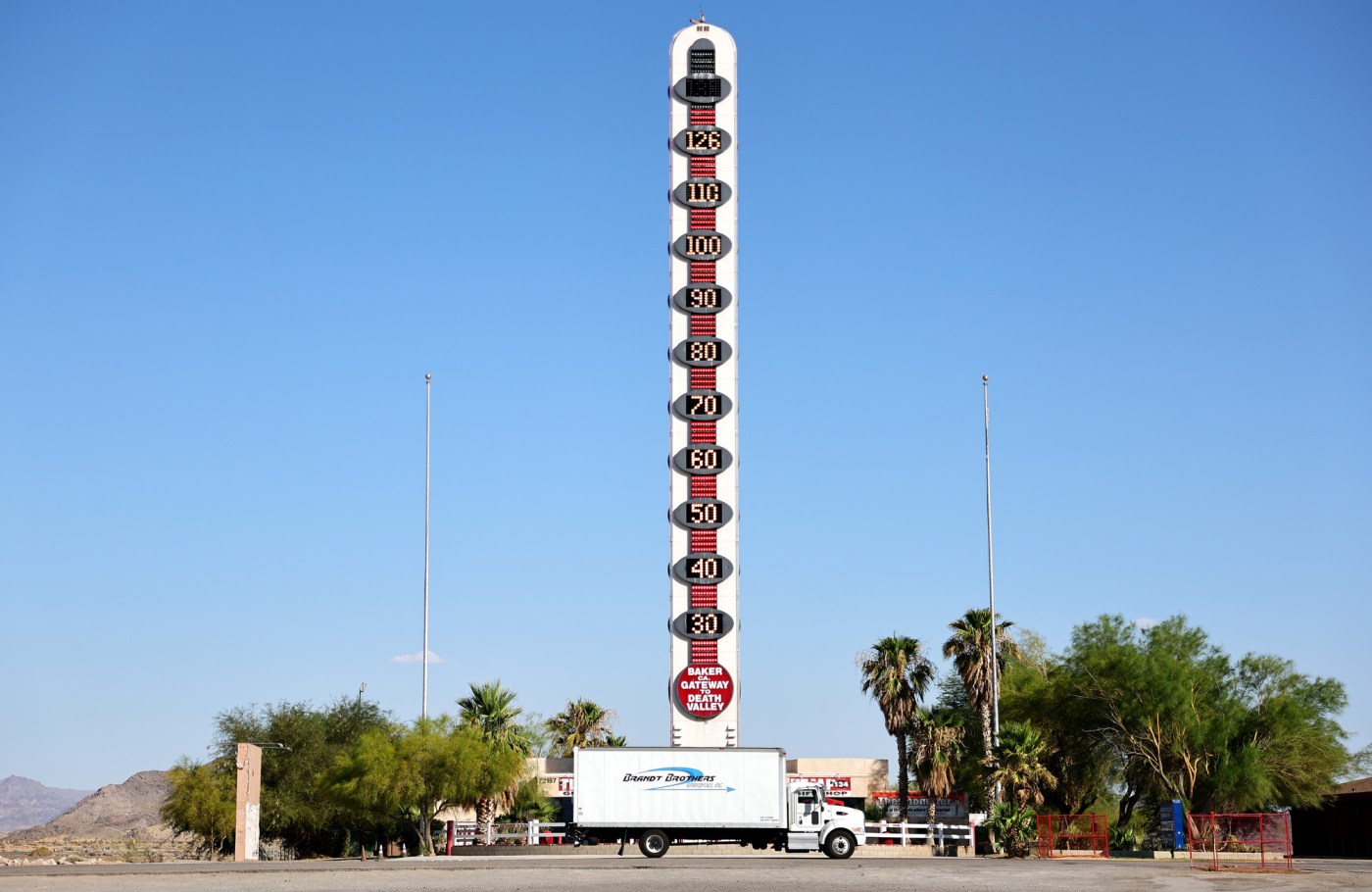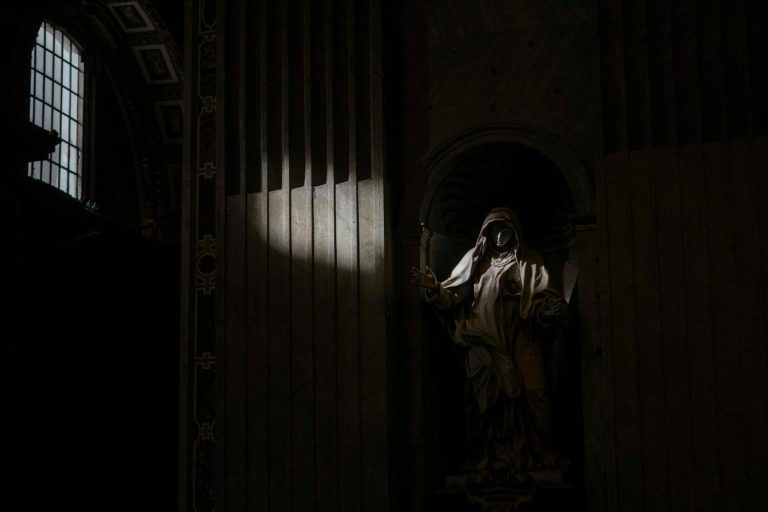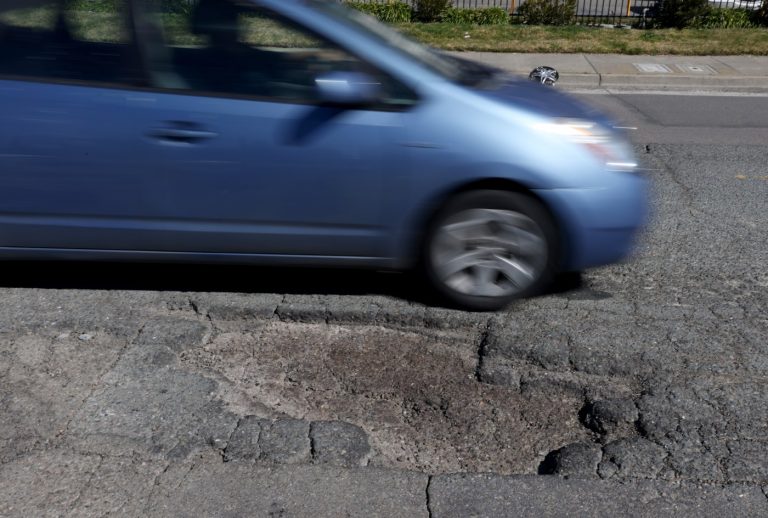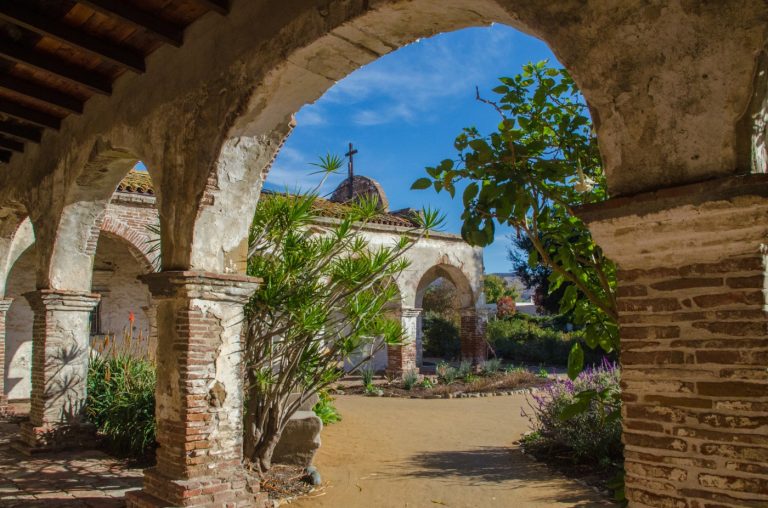By Ty O’Neil | Associated Press
DEATH VALLEY — Hundreds of Europeans touring the American West and adventurers from around the U.S. are still being drawn to Death Valley National Park, even though the desolate region known as one of the Earth’s hottest places is being punished by a dangerous heat wave blamed for a motorcyclist’s death over the weekend.
French, Spanish, English and Swiss tourists left their air-conditioned rental cars and motorhomes Monday to take photographs of the barren landscape so different than the snow-capped mountains and rolling green hills they know back home. American adventurers liked the novelty of it, even as officials at the park in California warned visitors to stay safe.
“I was excited it was going to be this hot,” said Drew Belt, a resident of Tupelo, Mississippi, who wanted to stop in Death Valley as the place boasting the lowest elevation in the U.S. on his way to climb California’s Mt. Whitney, the highest peak in the lower 48 states. “It’s a once-in-a-lifetime opportunity. Kind of like walking on Mars.”
Park Superintendent Mike Reynolds cautioned visitors in a statement that “high heat like this can pose real threats to your health.”
The searing heat wave gripping large parts of the United States also led to record daily high temperatures in Oregon, where it is suspected to have caused six deaths, the state medical examiner’s office said Tuesday. More than 161 million people around the U.S. were under heat alerts, especially in Western states.
Dozens of locations in the West and Pacific Northwest tied or broke previous heat records over the weekend and are expected to keep doing so into the week.
The early U.S. heat wave came as the global temperature in June was record warm for the 13th straight month and marked the 12th straight month that the world was 1.5 degrees Celsius (2.7 degrees Fahrenheit) warmer than pre-industrial times, the European climate service Copernicus said. Most of this heat is from long-term warming from greenhouse gases emitted by the burning of coal, oil and natural gas, scientists say.
An excessive heat warning was in place for much of Washington and Oregon on Tuesday, with the potential for temperatures to reach up to 110 F (43.3 C) in areas, posing a major risk for heat-related illness, the National Weather Service said.
Temperatures in parts of Idaho, including Boise, were expected to reach over 100 F (37.7 C) on Tuesday.
A serious heat wave in the Pacific Northwest in 2021 killed an estimated 600 people across Oregon, Washington and western Canada. Air conditioning is not common in much of the Pacific Northwest, a region unaccustomed to such heat.
In eastern California’s sizzling desert, a high of 128 F (53.3 C) was recorded over the weekend at Death Valley National Park, where a visitor, who was not identified, died Saturday from heat exposure. Another person was hospitalized.
They were among six motorcyclists riding through the Badwater Basin area in scorching weather, the park said in a statement. The other four were treated at the scene. Emergency medical helicopters were unable to respond because the aircraft cannot generally fly safely over 120 F (48.8 C), officials said.
Death Valley is considered one of the most extreme environments in the world. The hottest temperature ever officially recorded on Earth was 134 F (56.67 C) in July 1913 in Death Valley, though some experts dispute that measurement and say the real record was 130 F (54.4 C), recorded there in July 2021.
“It’s impressive,” Thomas Mrzliek of Basel, Switzerland, said of the triple digit heat. “It like a wave that hits when you get out of the car, but it’s a very dry heat. So it’s not as in Europe.”
Across the desert in Nevada, Las Vegas already had hit 103 F (39.4 C) by 9:30 a.m. Tuesday and was likely to approach 120 F (48.8 C) again by day’s end.
“Intense heatwave will continue to set records through the end of the week before moderating as increasing monsoonal moisture returns to the area,” the National Weather Service in Las Vegas said.
In Arizona, the average temperatures for the first eight days of July have been the hottest on record for Phoenix and Yuma, said the National Weather Service in Phoenix. It said both cities will remain at about 10 degrees above normal over the next few days, with highs mostly between 112 F (44.4 C) and 120 F (48.8 C).
Extreme heat and a longstanding drought in the West has also dried out vegetation that can fuel wildfires.
In California, firefighters were on the lines of at least 18 wildfires Tuesday, including a 41-square-mile (106-square-kilometer) blaze in the mountains of Santa Barbara County. The Lake Fire was only 12% contained, and forecasters warned of a “volatile combination” of high heat, low humidity and northwest winds developing late in the day.
“The main priority is to prevent the fire from moving toward communities to the south,” the fire status report said.
A small but smoky blaze, dubbed the Royal Fire, burned through more than 150 acres (60 hectares) of forest west of Lake Tahoe and sent ash raining down on the tourist town of Truckee, California. There was no containment Monday night.
Related Articles
Millions without power in Houston after Beryl batters Texas
NYC prosecutors plan to bring new charges against Weinstein
Dems meet on Capitol Hill as Biden vows to keep running
Body of American recovered 22 years after avalanche in Peru
Opinion: Putin and Kim Jong Un alliance won’t spell doom for United States
Rare heat advisories were extended even into higher elevations including around usually temperate Tahoe area, with the weather service in Reno, Nevada, warning of “major heat risk impacts, even in the mountains.” At Sand Harbor State Park, the record high of 92 F (33.3 C) set on Sunday smashed the old record of 88 F (31.1 C) set in 2014. For the third straight day, the town of South Lake Tahoe, California, hit a high of 91 F (32.7 C), beating the previous record of 89 F (31.6 C) set in 2017.
And for the first time in records dating to 1888, Reno reached 105 F (40.5 C) for the third consecutive day. A short time later on Monday, the city set a record high of 106 F (41.1 C), leap-frogging the previous mark of 104 F (40 C) set in 2017.
“It’s definitely hotter than we are used to,” Nevada State Parks spokesperson Tyler Kerver said.
Stern reported from Reno, Nevada. AP journalists Claire Rush in Portland, Oregon; Anita Snow in Phoenix; Christopher Weber and John Antczak in Los Angeles; Becky Bohrer in Juneau, Alaska; and Scott Sonner in Reno, Nevada, contributed to this report.












